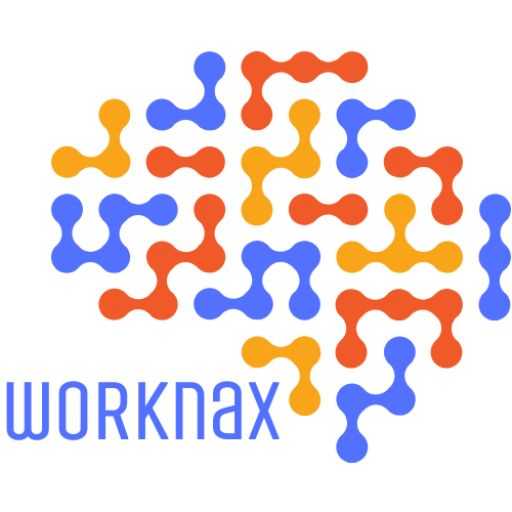Anúncios
start career boost beginner is the first sentence because your professional path unfolds in a fast, changing world where automation and hybrid work reshape how people learn and show impact.
You face real shifts: McKinsey says many job activities could be automated, and most firms see a skills gap ahead. At the same time, surveys show rising burnout since the pandemic. You don’t need flashy fixes. Small, steady steps and regular feedback move you forward more than chasing trends.
This article gives practical, honest information you can test today. You’ll learn to map skills to demand, set clear targets, and find chances in your industry without losing energy. No promises of overnight wins — just tools to measure progress and open real opportunities as your journey unfolds.
Introduction: Why boosting your career today looks different
Hybrid setups and automation are changing what employers expect day to day. McKinsey finds that 60% of occupations could see 30%+ of tasks automated. Many organizations also report widening skill gaps. Indeed shows burnout levels remain higher than before the pandemic.
Hybrid work, automation, and the new baseline
Hybrid models mean you must show impact both remotely and in person. Automation shifts which tasks matter. Track industry signals and news so your development fits what teams actually need.
Beginners’ advantage: clarity, curiosity, and momentum
When you are early in your path, you can align goals with real demand. Use curiosity to learn public signals. Small wins build momentum and protect energy.
What you’ll get from this listicle
- Clear ways to scan trends and act.
- Step-by-step templates for setting weekly goals.
- Practical examples that match hiring needs.
“Focus on tasks that show value today, not the tasks of yesterday.”
By the end, you’ll have simple steps and the information to move forward this week and keep measuring progress.
Set SMART goals that guide real progress
Setting clear goals helps you turn vague effort into measurable impact. Use simple language so others can read and act on your plan.
Use Specific, Measurable, Achievable, Relevant, Time-bound goals
Be specific. State the outcome and metric, for example: reduce cycle time by 15% in 90 days.
Make it measurable. Pick numbers or dates you can track. This makes review fast and objective.
Align goals with changing market needs and your values
Match each goal to a clear business outcome the organization cares about—cost, quality, or customer satisfaction.
Review monthly. Adjust the plan when the industry shifts or your team priorities change.
Example: Roadmap to a first leadership opportunity
- Define one 90-day goal: complete a process-improvement project tracked by team metrics.
- Volunteer to lead a small cross-functional task and enroll in a short management workshop.
- Run a retrospective, collect stakeholder feedback, and document before‑after data.
“Tie each goal to a business result and review often to learn faster.”
Map your skills to market demand before you invest time
Before you invest hours in training, check whether the market actually needs the skills you plan to learn. A quick audit saves time and keeps your development practical.
Audit your strengths and gaps against job postings and trends
Collect three current job postings for the role you want. Highlight repeated skills, tools, and phrases. That pattern shows what employers list again and again.
Use CareerOneStop’s Skills Matcher and employer competency lists
Run your profile through CareerOneStop’s free Skills Matcher to benchmark strengths and pinpoint gaps. Combine that output with employer competency lists to build a short plan.
Data and priorities: what to know now
87% of companies report a current or near-term skills gap, so matching demand matters. Employers often value communication and problem-solving above niche tools.
- Translate postings into a simple plan: what to learn, how to practice, and which projects prove capability.
- Prioritize two high-leverage skills and schedule practice time so you stay focused.
- Build a small portfolio: short write-ups, code snippets, dashboards, or process maps that match job criteria.
“Focus on the few skills employers list most often, then show them in short projects.”
Track progress with a skills matrix and update it after you ship work or get feedback. Share your profile with a peer for quick review and refine based on their suggestions.
Keep learning with flexible, credible options
Pick credible programs that match clear outcomes and your available time. Online formats let you balance work, training, and practical practice without major disruption.
Use trusted platforms and local programs
Look at LinkedIn Learning, Coursera, and edX for structured courses with instructor bios and hands‑on projects. Community colleges and university certificate programs offer affordable, paced paths that fit busy schedules.
Ask about employer support
Talk to HR about tuition reimbursement, internal training calendars, and free certifications your company funds. Many employers back training that maps to team goals.
Short certificates vs. degrees
Compare by total time, cost, and how hiring managers in your field view each credential. Short certificates can prove specific skills fast. Degrees offer deeper knowledge but require more time and expense.
Tip: vet YouTube and practice what you learn
Use YouTube for quick clarifications, but verify creators’ credentials and date of content. Then build small artifacts weekly—presentations, analyses, or prototypes—to show new skills.
- Choose courses with clear outcomes and real projects.
- Balance learning and doing by splitting study time and portfolio work.
- Reassess monthly to stop what doesn’t help and double down on high‑value training.
“Pick evidence-based programs and prove your learning with tangible work.”
Build a network and seek mentorship the smart way
A practical network helps you find projects, mentors, and timely opportunities.
Begin inside your organization. Join internal groups, attend town halls, and volunteer at events where you can learn and contribute. Prepare a one‑line intro stating your role, focus, and the projects you want to support.
Go outside: events and outreach
Pick one external conference or meetup each quarter. At events, meet professionals with a helpful question, not a pitch. On LinkedIn, reference a shared interest, recent talk, or article to show genuine attention.
Mentorship realities and how to ask
“Nearly 85% of employees lack mentors, while 97% say mentorship is valuable.”
Use the double opt‑in: ask both people if they agree before sharing contact details. Propose a light cadence—20 minutes once a month—to keep commitment manageable.
- Be a great mentee: come prepared, act on advice, and report back.
- Offer value: share resources, summarize notes, or volunteer at events.
- Keep a simple relationships tracker so follow‑ups feel natural.
Focus on value, not spam. Build trust with small acts and watch those connections turn into real career opportunities.
Polish your personal brand and communication basics
How you present your work and write a short email can shape which roles notice you. A tidy résumé, an updated LinkedIn, and clear video habits make your profile easier to scan and trust.

Refresh résumé with modern tools and tailor to roles
Mirror role keywords and highlight measurable results. Use numbers: time saved, revenue helped, or error rates reduced.
Try LinkedIn’s résumé builder to sync your profile and speed updates. Save tailored versions for each job and send the one that matches the posting.
Strengthen LinkedIn: headline, about, projects, recommendations
Write a headline that names your value and a short About that lists key skills and recent projects. Add brief project notes or media so hiring teams can see your work fast.
Ask managers or peers for recommendations that mention outcomes and teamwork. Those lines boost credibility when recruiters scan profiles.
Email and video presence: concise writing and professional setup
Keep email short: clear subject, one ask, a deadline, and any links or attachments. Proofread—small errors distract from solid results.
For video, set your camera at eye level, keep a clean background, and light your face from the front. Speak clearly and keep meetings on purpose so your management visibility improves.
“Tailor what you show and keep messages simple — small changes raise trust fast.”
- Tailor résumé to each job by mirroring role keywords and measurable results.
- Use tools like LinkedIn’s résumé builder to keep documents consistent with your profile.
- Share portfolio content regularly—case notes, demos, or short write-ups—for feedback.
Manage time, energy, and boundaries to prevent burnout
Protecting focus and rhythm lets you make steady progress without running out of steam. Use simple habits so your days support long-term growth and steady results.
Use the Eisenhower Matrix and time blocks for deep work
Each week, sort tasks with the Eisenhower Matrix to separate urgent from important. This protects time for meaningful goals.
Block focused sessions on your calendar for practice, project delivery, and review. Treat blocks like meetings so they are less likely to be moved.
Set work‑life boundaries; why balance supports long-term growth
Define clear start/stop times, no‑meeting windows, and short breaks. Batching similar tasks cuts context switching and raises productivity without longer hours.
Track one or two personal indicators—sleep or energy—to spot burnout early. Negotiate workloads with your manager when priorities shift so deliverables stay realistic.
“Consistent, healthy routines support long-term progress more than occasional sprints.”
- Review your calendar weekly and drop low‑value items.
- Use a lightweight task system to visualize trade‑offs.
- Build recovery habits—walks, hydration, and short pauses—that protect focus and sustain your career.
Start career boost beginner: adapt fast, seek feedback, iterate
Track shifts in your field and use short tests to turn new signals into real progress. Build a simple system that keeps you aware of news and tech, and then act on what you learn.
Stay current: track industry news and emerging tech
Pick two trusted sources—a trade site and a newsletter—and skim them weekly to spot trends. Track one emerging tech or method tied to your job and run a tiny experiment to learn by doing.
Feedback loops: ask, absorb, act, and track progress
Build a simple loop: ask a peer or manager for specific feedback, capture it, and plan one change to test. Close the loop by sharing what you tried and what improved.
- Keep a short log of lessons learned linked to your goals so growth is visible.
- Use lightweight tools—checklists, rubrics, or templates—to cut rework and speed development.
- Schedule a monthly review to celebrate growth and set the next small stretch.
“Short cycles of testing and reflection teach you faster than passive study.”
Small, repeatable experiments tied to clear goals make new skills sticky and show real job impact over time.
Conclusion
Real growth comes from tiny experiments that add up over months, not one big leap.
Keep your plan simple: clear goals, weekly actions, and regular check‑ins with a manager or mentor.
Prioritize skills you can apply at work so progress shows in real outcomes. Use internal programs, reputable platforms, and short courses as cost‑effective resources for learning and development.
Practice leadership in small ways—facilitate a meeting, lead a task, or mentor a peer—and document each experience for résumé and social media updates.
Everyone’s path is different. Learn at your pace, lean on mentors or specialists when you need help, and measure results rather than chase guarantees.



